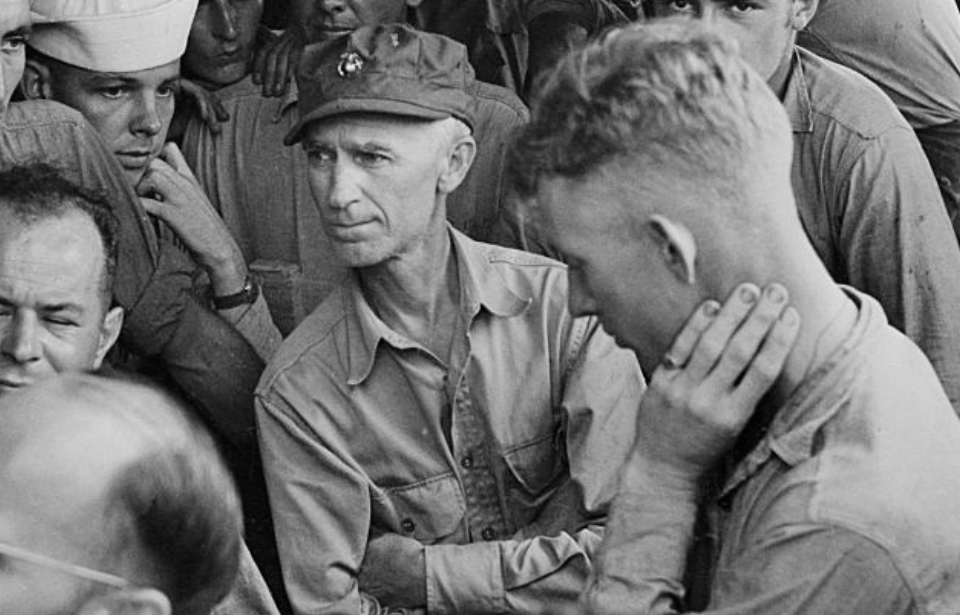Ernie Pyle was considered the foremost war correspondent in America during the Second World War. His distinctive writing style and relationships with those on the frontlines provided him with a unique perspective on the war effort. This not only earned him national recognition, but the respect of the troops he wrote about.
Ernie Pyle yearned for adventure
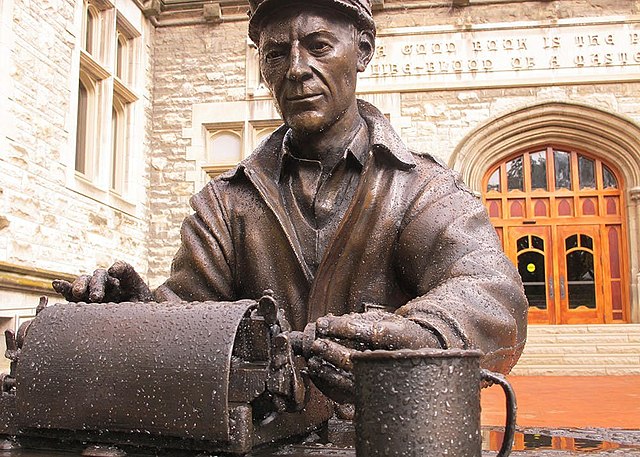
Ernie Pyle was born in Dana, Indiana on August 3, 1900. A shy and intelligent boy, he yearned for adventure and wanted to see the world. He thought the opportunity arose during World War I. In October 1918, he enlisted with the US Naval Reserve, but was never deployed overseas, as the conflict ended before he could complete his training.
Pyle enrolled at Indiana University in 1919, where he majored in economics and took a number of journalism courses. He eventually became the editor of the school’s newspaper, the Indiana Daily Student, where he developed his distinctive writing style.
Beginnings of a successful career
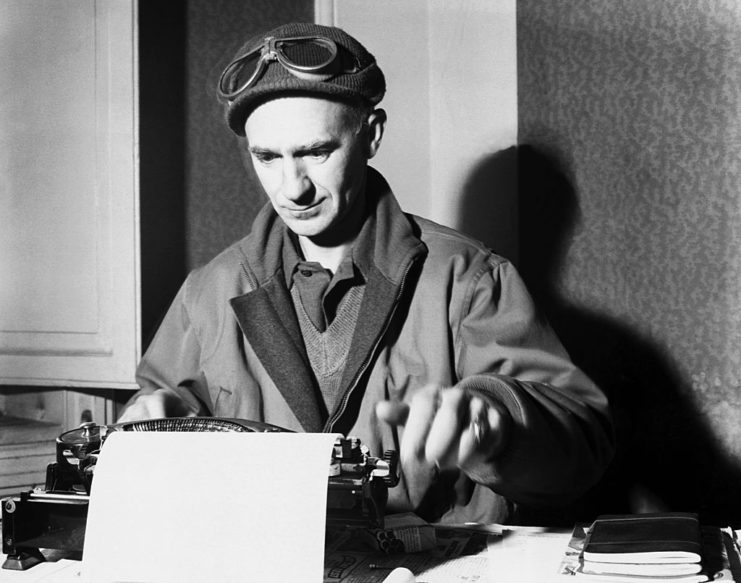
One semester shy of graduating, Ernie Pyle left school and became a reporter for the LaPorte Herald-Argus. From there, he held a number of journalism positions, including with The Washington Daily News, The Evening World and The Evening Post. He eventually returned to The Washington Daily News, where his career experienced its jumpstart.
Pyle convinced his editor to allow him to write an aviation column, called D.C. Airports Day by Day. It was a hit with pilots and readers alike, and saw nationwide syndication. His hard work earned him a promotion to managing editor in 1932.
In need of an escape, Pyle convinced his bosses he would be best positioned as a roving reporter. Starting in 1935 and lasting six years, he traveled the world, covering 200,000 miles over five continents.
Ernie Pyle’s foray into Europe
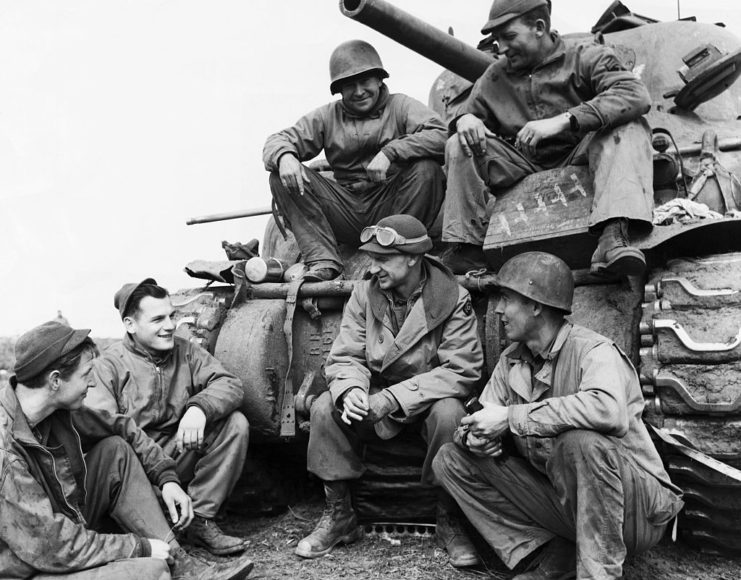
Within the first year of World War II, Ernie Pyle was allowed to cover the goings-on in England. He set sail in December 1940, and within his first few days of arriving in London experienced his first air raid.
He called the bombings savage and praised those who raced to put out the flames. His columns from London were met with critical acclaim, so much so that a publisher approached him about printing them in a book, tilted Ernie Pyle in England. It was published in late 1941.
Pyle eventually returned to the US to care for his wife, who was in the midst of depression. He couldn’t stay idle for long, however, and planned a trip to Asia. Unfortunately, it was delayed at the last minute by the State Department, and just a few weeks later the Japanese bombed Pearl Harbor.
Pyle immediately traveled to California, where the country’s war anxiety was at its peak. He grew bored after a month and tried to enlist in the Navy, but was denied because of his small stature.
Allied Invasion of North Africa
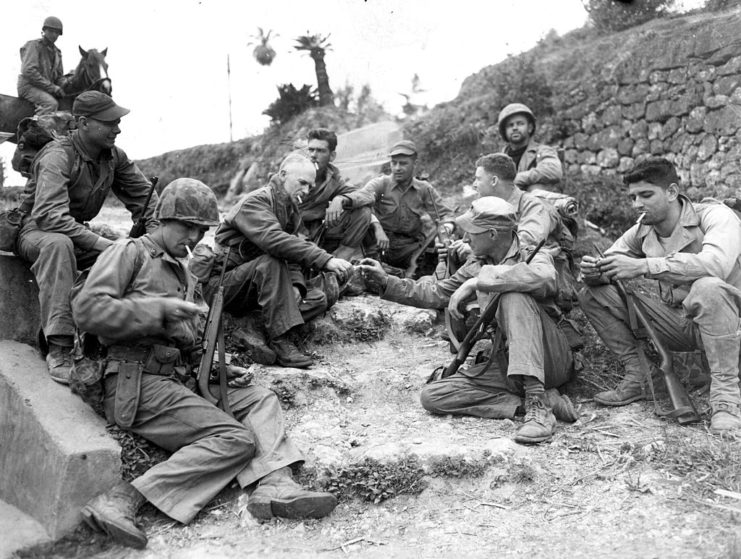
With the US officially in the war, Ernie Pyle returned to England to write pieces about American soldiers and their relationships with the British. He traveled with them south for the Invasion of North Africa in November 1942, where he further fostered his relationships with those on the front.
Pyle churned out pieces about quartermasters, military police and airmen, but he had a special place for infantrymen, whom he believed were “the underdogs” of the US Army. He preferred to write about the men, rather than the battles they fought in, and the GIs appreciated his ability to put into words what they wanted to say but couldn’t.
His articles maintained an equal balance of covering the facts of the war while also discussing the Allies’ resolve when it came to battling the Germans. He didn’t want readers to feel despair over what was happening overseas, but he also refused to gloss over the realities of combat.
At the conclusion of the North Africa Campaign, Pyle followed the Americans when they invaded Sicily in July 1943. By the end of the operation, he was suffering from exhaustion and what he dubbed “a state of mental dullness.” He subsequently decided to return home, where he found himself to be a national celebrity.
Normandy landings
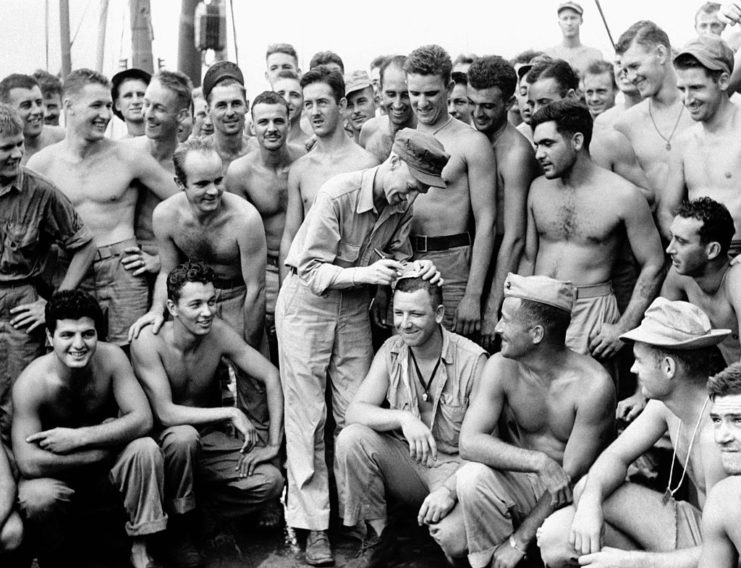
Feeling a sense of responsibility to continue doing his part, Ernie Pyle returned to Europe in December 1943. Over the following three months, he produced some of his most moving and poignant pieces. This included a piece on the death of Capt. Henry T. Waskow.
Pyle narrowly escaped a bombing raid during the Battle of Anzio and followed the Allies’ slow advance through the Italian peninsula. While in Italy, he wrote a column that argued GIs should get “fight pay,” in the same way airmen got “flight pay.” When Congress passed a bill enacting this, it was nicknamed the Ernie Pyle Bill.
He stayed in Italy until February 1944, when he traveled to England to await the upcoming Allied invasion of France. It was during this time that he learned he’d been awarded the Pulitzer Prize “for distinguished war correspondence during the year 1943.”
The Allied landings in Normandy occurred on June 6, 1944. Pyle had planned to wait a few weeks before traveling to the area, but was invited by Gen. Omar Bradley to watch from the bridge of his flagship, the USS Augusta (CA-31). When walking Omaha Beach the next day, he witnessed the wreckage of what had occurred.
Pyle remained in France for two more months, during which he witnessed the liberation of Paris in August 1944. He eventually reached his breaking point, the stress of living near the front and watching soldiers die having taken its toll.
Ernie Pyle travels to the Pacific Theater
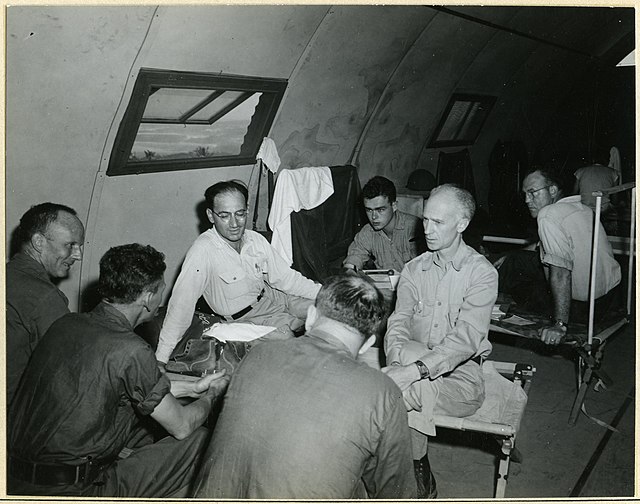
In the fall of 1944, Ernie Pyle returned home, without plans to return to the fighting. He only lasted a few months before feeling compelled to return to the front. Instead of traveling back to Europe, however, he decided it was time he covered the action happening between America and the Japanese in the Pacific.
In January 1945, Pyle departed from California and embarked on a journey that took him to Guam, Hawaii and Saipan. While aboard the aircraft carrier USS Cabot (CVL-28), he wrote about the Boeing B-29 Superfortress crews bombing Japan.
His coverage during this time was criticized by fellow journalists, as he had somewhat negative feelings about those serving in the US Navy. He felt the sailors had an easier time than the infantrymen in Europe, and he wrote several unflattering portrayals of the Marines.
Death in Okinawa
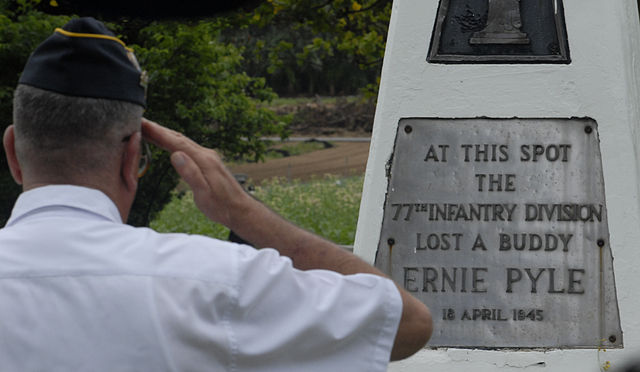
In March 1945, Ernie Pyle joined the Allied fleet bound for Okinawa. They arrived on April 17, 1945, and secured the airfield on the island of Ie Shima. Despite being in Allied hands, they hadn’t yet cleared it of enemy soldiers.
The next day, Pyle was riding in a Jeep with an officer when they came under fire from a hidden Japanese machine gunner. The pair dove for cover, but Pyle was shot after briefly raising his head. The injury was fatal.
Pyle’s death was a blow to Americans, who were still reeling over the death of President Franklin D. Roosevelt. Speaking about the journalist, newly-appointed president Harry S. Truman said, “No man in this war has so well told the story of the American fighting man as American fight men wanted it told. He deserves the gratitude of all his countrymen.”
More from us: The Bantam Battalions: Little Men With A Big Impact
Ernie Pyle was initially buried in Okinawa with the rest of the fallen. His body was later exhumed and reinterred at the National Memorial Cemetery of the Pacific in Oahu, Hawaii. On Ie Shima, a monument marks the site of his death.
